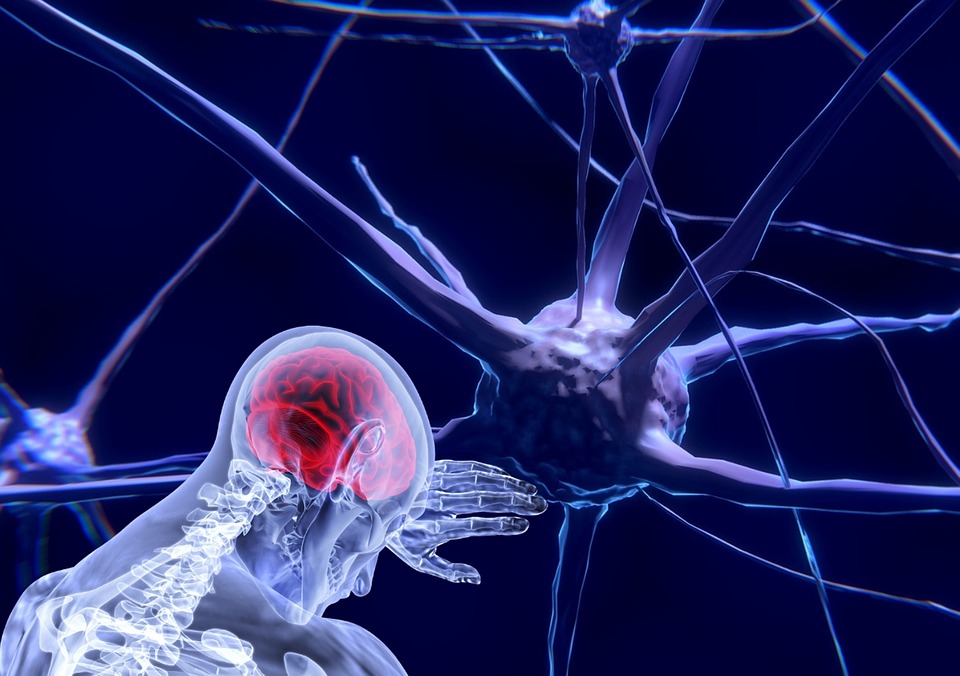Chronic diseases such as diabetes are on the rise and are costly and challenging to treat. Whitehead Institute Member Richard Young and colleagues have discovered a common denominator driving these diverse diseases, which may prove to be a promising therapeutic target: Proteolethargy, or reduced protein mobility, in the presence of oxidative stress.
Jennifer Cook-Chrysos/Whitehead Institute
Chronic diseases, such as type 2 diabetes and inflammatory disorders like rheumatoid arthritis, significantly impact humanity. They are among the leading causes of disease burden and deaths worldwide, posing both physical and economic challenges. Furthermore, the number of individuals affected by these diseases is rising.
Treating chronic diseases has proven challenging because they do not have a single, straightforward cause, such as a specific gene mutation that a treatment could target. However, research conducted by Richard Young, a member of the Whitehead Institute, and his colleagues, published in the journal Cell on November 27, reveals that many chronic diseases may share a common factor driving their dysfunction: reduced protein mobility. This means that approximately half of the proteins active in cells tend to slow down their movement when the cells are in a chronic disease state, which diminishes the proteins’ functions. The researchers’ findings suggest that protein mobility could be a crucial factor in the decreased cellular function observed in chronic diseases, making it a promising target for therapy.
In this paper, Young and his colleagues, including postdoc Alessandra Dall’Agnese, graduate students Shannon Moreno and Ming Zheng, and research scientist Tong Ihn Lee, describe their discovery of a shared mobility defect they call proteolethargy. They explain the underlying causes of this defect, how it leads to cell dysfunction, and propose a new therapeutic hypothesis for treating chronic diseases.
“I’m excited about the potential impact of this research on patients,” says Dall’Agnese. “I hope this leads to the development of a new class of drugs that can restore protein mobility, which could help individuals with various diseases that share this common mechanism.”
According to Lee, this project involved biologists, physicists, chemists, computer scientists, and physician-scientists. “Bringing together this diverse expertise is a strength of the Young lab. By examining the problem from various perspectives, we gained valuable insights into how this mechanism might function and its potential to reshape our understanding of the pathology of chronic diseases.”
Commuter delays cause work stoppages in the cell
How do proteins moving slowly through a cell lead to significant cellular dysfunction? Dall’Agnese explains that every cell functions like a tiny city, with proteins acting as the workers who keep everything running smoothly. Proteins must travel through dense traffic within the cell, moving from where they are produced to where they are needed. The quicker their commute, the more efficient their work becomes. Now, imagine a city that starts experiencing traffic jams on all its roads. Stores may not open on time, groceries could get stuck in transit, and meetings might be postponed. Essentially, all operations within the city slow down.
The slowdown of cellular operations in cells with reduced protein mobility follows a similar pattern. Normally, most proteins move rapidly throughout the cell, colliding with other molecules until they find the one they need to interact with or affect. When a protein moves more slowly, it encounters fewer other molecules, making it less likely to perform its function effectively. Young and colleagues discovered that these slowdowns in protein movement result in measurable decreases in the proteins’ functional output. When numerous proteins are unable to complete their tasks on time, cells begin to face various issues, which are commonly observed in chronic diseases.
Discovering the protein mobility problem
Young and his colleagues first suspected that cells affected by chronic diseases might have issues with protein mobility after observing changes in the behaviour of the insulin receptor. The insulin receptor is a signalling protein that reacts to insulin’s presence, prompting cells to absorb sugar from the bloodstream. In individuals with diabetes, cells become less responsive to insulin, a condition known as insulin resistance, which leads to elevated blood sugar levels. In research published in Nature Communications in 2022, Young and his colleagues reported that the mobility of insulin receptors could be significant in the context of diabetes.
Knowing that many cellular functions are altered in diabetes, the researchers considered the possibility that altered protein mobility might somehow affect many proteins in cells. To test this hypothesis, they studied proteins involved in a broad range of cellular functions, including MED1, a protein involved in gene expression; HP1α, a protein involved in gene silencing; FIB1, a protein involved in the production of ribosomes; and SRSF2, a protein involved in splicing of messenger RNA. They used single-molecule tracking and other methods to measure how each of those proteins moves in healthy cells and in cells in disease states. All but one of the proteins showed reduced mobility (about 20-35%) in the disease cells.
“I’m excited that we were able to transfer physics-based insight and methodology, which are commonly used to understand the single-molecule processes like gene transcription in normal cells, to a disease context and show that they can be used to uncover unexpected mechanisms of disease,” Zheng says. “This work shows how the random walk of proteins in cells is linked to disease pathology.”
Moreno concurs: “In school, we’re taught to consider changes in protein structure or DNA sequences when looking for causes of disease, but we’ve demonstrated that those are not the only contributing factors. If you only consider a static picture of a protein or a cell, you miss out on discovering these changes that only appear when molecules are in motion.”
Can’t commute across the cell, I’m all tied up right now
Next, the researchers needed to determine what was causing the proteins to slow down. They suspected that the defect had to do with an increase in cells of the level of reactive oxygen species (ROS), molecules that are highly prone to interfering with other molecules and their chemical reactions. Many types of chronic-disease-associated triggers, such as higher sugar or fat levels, certain toxins, and inflammatory signals, lead to an increase in ROS, also known as an increase in oxidative stress. The researchers measured the mobility of the proteins again in cells that had high levels of ROS and were not otherwise in a disease state and saw comparable mobility defects, suggesting that oxidative stress was to blame for the protein mobility defect.
The final part of the puzzle was why some, but not all, proteins slow down in the presence of ROS. SRSF2 was the only one of the proteins that was unaffected in the experiments, and it had one clear difference from the others: its surface did not contain any cysteines, an amino acid building block of many proteins. Cysteines are especially susceptible to interference from ROS because it will cause them to bond with other cysteines. When this bonding occurs between two protein molecules, it slows them down because the two proteins cannot move through the cell as quickly as either protein alone.
About half of the proteins in our cells contain surface cysteines, so this single protein mobility defect can impact many different cellular pathways. This makes sense when one considers the diversity of dysfunctions that appear in the cells of people with chronic diseases: dysfunctions in cell signalling, metabolic processes, gene expression and gene silencing, and more. All of these processes rely on the efficient functioning of proteins—including the diverse proteins studied by the researchers. Young and colleagues performed several experiments to confirm that decreased protein mobility does, in fact, decrease a protein’s function. For example, they found that when an insulin receptor experiences decreased mobility, it acts less efficiently on IRS1, a molecule to which it usually adds a phosphate group.
From understanding a mechanism to treating a disease
Discovering that decreased protein mobility in the presence of oxidative stress could be driving many of the symptoms of chronic disease provides opportunities to develop therapies to rescue protein mobility. In the course of their experiments, the researchers treated cells with an antioxidant drug called N—acetyl cysteine—something that reduces ROS—and saw that this partially restored protein mobility.
The researchers are pursuing a variety of follow-ups to this work, including the search for drugs that safely and efficiently reduce ROS and restore protein mobility. They developed an assay that can be used to screen drugs to see if they restore protein mobility by comparing each drug’s effect on a simple biomarker with surface cysteines to one without. They are also looking into other diseases that may involve protein mobility, and are exploring the role of reduced protein mobility in aging.
“The complex biology of chronic diseases has made it challenging to come up with effective therapeutic hypotheses,” says Young, who is also a professor of biology at the Massachusetts Institute of Technology. “The discovery that diverse disease-associated stimuli all induce a common feature, proteolethargy, and that this feature could contribute to much of the dysregulation that we see in chronic disease, is something that I hope will be a real game changer for developing drugs that work across the spectrum of chronic diseases.”


